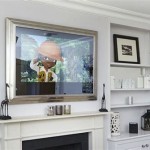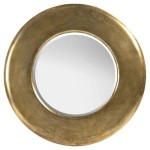How to Make TVs Mirror Each Other
Mirroring, also known as screencasting or screen sharing, allows content displayed on one TV to be simultaneously shown on another. This functionality offers various applications, ranging from amplifying presentations to sharing entertainment across multiple rooms. Several methods facilitate TV mirroring, each with its specific advantages and technical requirements.
Using HDMI Cables for Direct Mirroring
A direct wired connection using HDMI cables offers the most reliable and highest quality mirroring solution, particularly for high-bandwidth content like 4K video. This method is particularly suitable for shorter distances and eliminates the potential instability of wireless connections. However, physical cable management can present challenges, especially across longer distances or between rooms.
Leveraging HDMI Splitters for Multiple Displays
HDMI splitters provide a straightforward approach to displaying the same content on multiple TVs. Connecting the source device to the splitter's input, and then connecting each TV to an output on the splitter, enables simultaneous mirroring. This solution is cost-effective for a smaller number of TVs, typically up to four. However, splitters may introduce signal degradation for higher resolutions if not of sufficient quality.
Employing Wireless HDMI Transmitters and Receivers
Wireless HDMI extenders eliminate the need for physical cables, offering greater flexibility in placement and convenience. A transmitter connects to the source device, sending the signal wirelessly to a receiver connected to the second TV. These systems are especially useful for connecting TVs across different rooms or locations where cabling is impractical. Factors to consider include potential signal interference from other wireless devices and the maximum supported resolution, which can vary depending on the specific model.
Utilizing Screen Mirroring Features of Smart TVs
Many modern Smart TVs incorporate built-in screen mirroring capabilities, often leveraging technologies like Miracast or AirPlay. This method typically requires both TVs to be connected to the same Wi-Fi network. The process usually involves enabling screen mirroring on both televisions and selecting the target display from the source TV's settings. The ease of use and lack of additional hardware make this a convenient option, but compatibility between different TV brands and operating systems can be a limiting factor.
Casting with Chromecast and Similar Devices
Streaming devices like Chromecast, Amazon Fire TV Stick, and Roku provide casting functionality, enabling mirroring from compatible devices. Connecting the casting device to the second TV and using a smartphone, tablet, or computer to cast content offers a versatile and relatively inexpensive solution. This method relies on network connectivity, so network stability and bandwidth are critical for optimal performance.
Screen Mirroring from Windows Devices
Windows operating systems offer a built-in screen mirroring feature, allowing users to wirelessly project their desktop or specific applications to compatible devices, including some Smart TVs. This functionality uses Miracast technology, requiring both the Windows device and the TV to support it. Network connectivity is essential, and users may need to adjust display settings on the Windows device to initiate the mirroring process.
Mirroring from macOS Devices Using AirPlay
Apple devices, such as Macs, iPhones, and iPads, utilize AirPlay for screen mirroring to compatible devices, including Apple TV and some AirPlay 2-enabled Smart TVs. AirPlay offers seamless integration within the Apple ecosystem, facilitating effortless mirroring of the entire display or specific content. However, this method requires a compatible receiving device, limiting its applicability to environments with Apple TV or AirPlay-compatible TVs.
Utilizing Third-Party Screen Mirroring Software
Various third-party software solutions exist for screen mirroring across different operating systems and devices. These applications can offer additional features and flexibility compared to built-in options. However, some software might require subscriptions or involve complex setup procedures. Compatibility with various operating systems and devices is a key factor to consider when selecting such software.
Considerations for Optimal Mirroring Performance
Several factors influence the performance of screen mirroring, regardless of the chosen method. Network bandwidth plays a crucial role in wireless mirroring; a strong and stable Wi-Fi connection is essential for smooth, lag-free performance. The distance between devices, especially for wireless solutions, can affect signal strength and quality. Finally, the capabilities of both the source and receiving devices, including supported resolutions and technologies, determine the overall quality and effectiveness of the mirroring setup.

How To Make A Mirror Tv Step By Instructions

Bathroom Tv Mirror Faq

How To Screen Mirror From Your Phone Tablet Or Computer Roku Streaming Device

Connecting Laptop To The Tv With Just A Few Simple Steps Resource Centre By Reliance Digital

How To Cast Iphone Android Phone Your Tv Asurion

2024 Full Guide How To Make Screen Mirroring

How Does Screen Mirroring Work Iphone Ipad Mac Android

What Is Screen Mirroring And How Do I Use It With My Samsung Tv Mobile Device

How To Mirror From Your Samsung Smartphone Tv Gulf

Iphone Screen Mirroring The Complete Updated Guide








